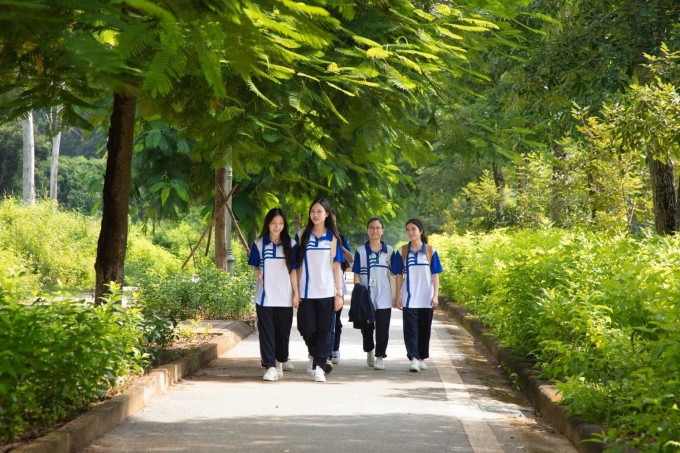Hanoi plans to relocate some universities to satellite cities and build new schools following the model of a concentrated university area, distributed according to clusters of training industries and occupations.
This orientation is mentioned in the draft Adjustment of the General Planning of Hanoi Capital to 2045, with a vision to 2065.
According to the Hanoi People's Committee, by 2030, the capital will have about 650,000-700,000 students, accounting for 40% of the total number of students in the Red River Delta. The city plans to adjust the distribution of the network of universities and colleges in a reasonable manner, by moving schools with insufficient areas to satellite cities. The training scale in the inner city area from the Nhue River belt to the inner city districts will be reduced to a maximum of 200,000 students.
Training facilities that will be preserved, renovated, and upgraded are schools with an area of 2 hectares or more, reducing the current training scale to meet the target of 20 m2/student. "Special" schools that may have a scale of less than 2 hectares but meet the target of 20 m2/student may be allowed to be upgraded. In addition, the city plans to preserve and renovate schools with a long history of development such as Hanoi University of Pharmacy, Hanoi Medical University, and Hanoi University of Science and Technology.
Schools with an area of less than 2 hectares, except for "special" schools as above, are encouraged to move outside the central urban area.
The new campus is built according to the model of a concentrated university area to save land and capital for infrastructure construction, creating conditions according to an advanced model, meeting the needs of training, research and practical application. The average area per capita in the new campuses is expected to be about 50-60 m2 of land/student.
The training fields at the school clusters will be distributed reasonably with the nature and function of the surrounding urban areas. Specifically, Son Tay town will prioritize training in culture, tourism, and art. Hoa Lac area, Thach That district, focuses on high-quality training in basic sciences. Phu Xuyen prioritizes training in fields related to multi-industry applications, Soc Son focuses on fields of economics, trade, and banking, and Xuan Mai town, Chuong My district, focuses on pedagogical fields.
This plan of Hanoi People's Committee is in the process of collecting opinions and completing to submit to the Government.

Hoa Lac campus of Vietnam National University, Hanoi
The above plans of Hanoi have many similarities with the draft plan for the network of higher education institutions until 2030, with a vision to 2050 of the Ministry of Education and Training. According to the Ministry, the Red River Delta region with Hanoi as its center will focus on training high-quality, highly-skilled human resources associated with scientific research and innovation in all key areas. A number of university clusters will be formed along both sides of the 4th belt of the capital region to expand and link development space.
The plan to relocate universities from the center of Hanoi to the suburbs was proposed in 2010. However, due to many difficulties, the most common being that schools have not been granted land in the new area or have not yet expired their land lease in the inner city, the relocation has not progressed as planned.
This puts pressure on Hanoi's infrastructure, especially in the inner city, affecting the construction progress of public works, kindergartens, and public schools in the city.
Currently, the capital is home to nearly 60 universities, most of which have an area of less than 10 hectares, with three schools even having less than 1 hectare. The average land area per capita at schools is still low, with some schools in the inner city having only about 2 square meters per student. Meanwhile, according to current standards, higher education institutions must meet the target of 25 square meters per student.
According to VnExpress